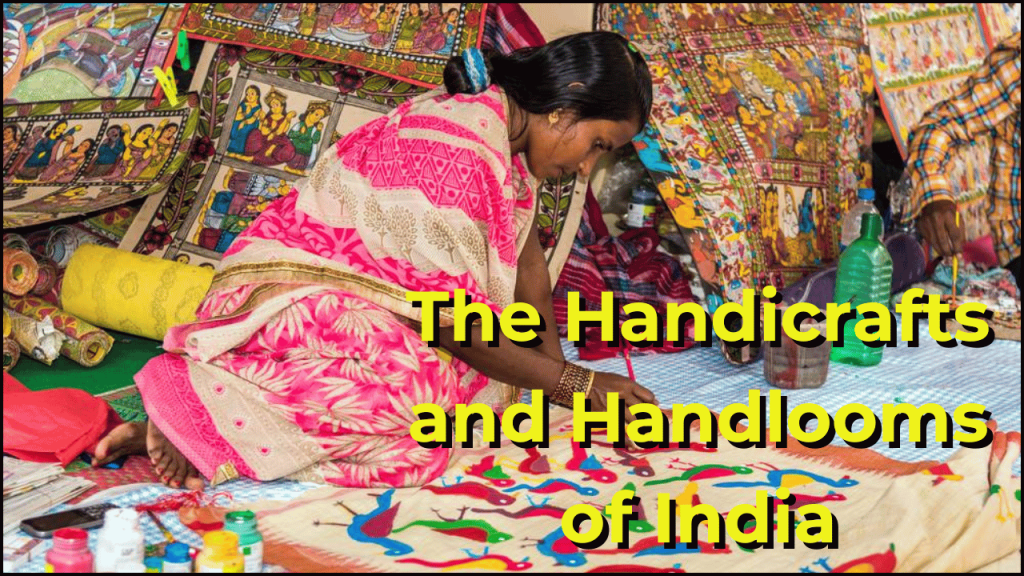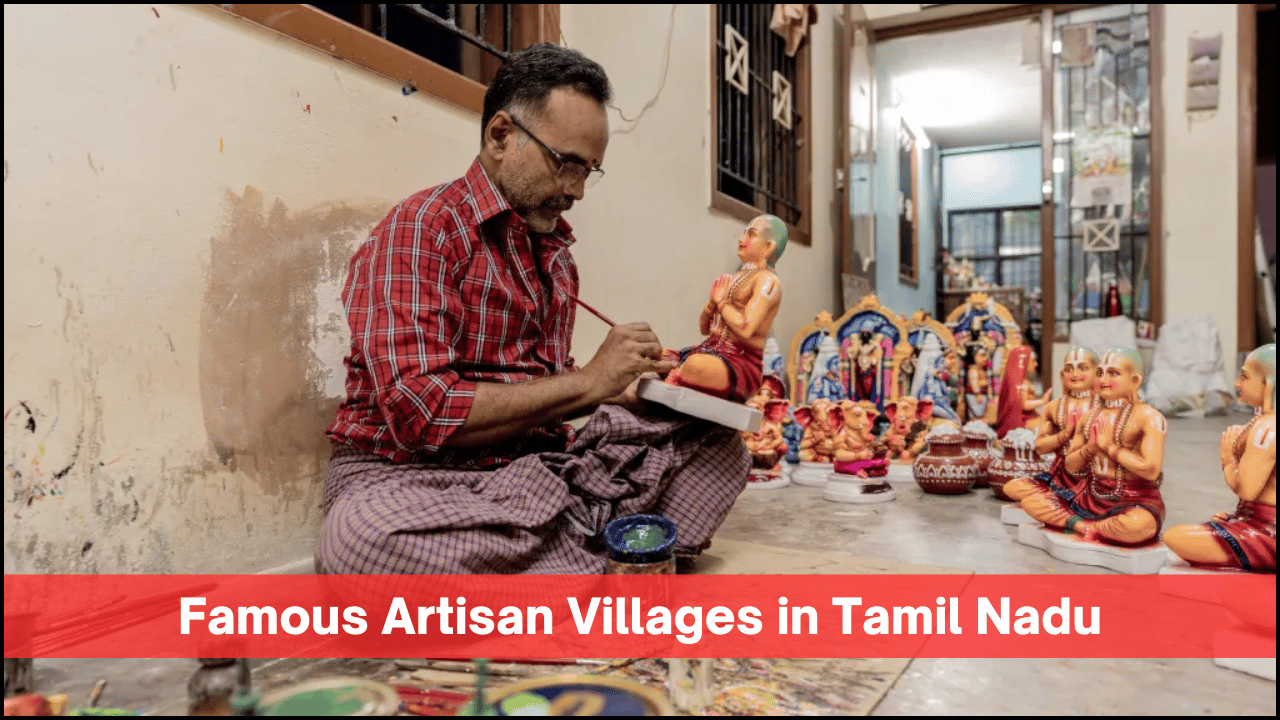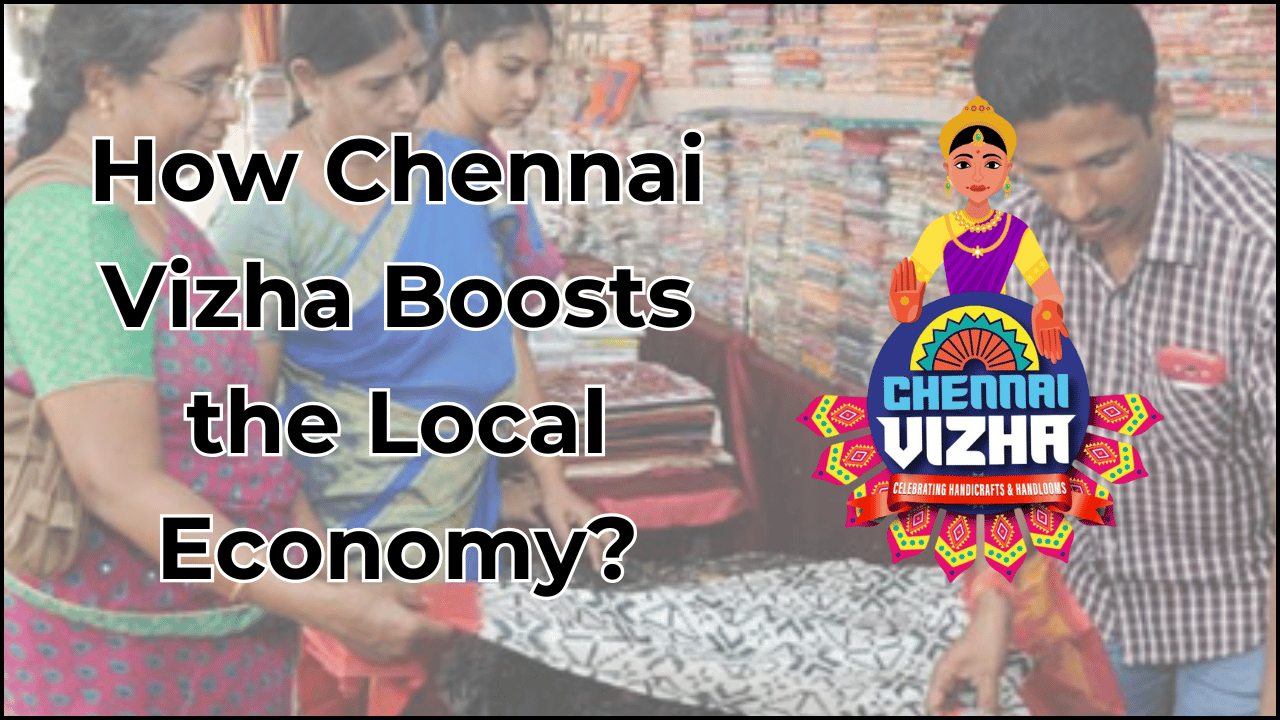
India is a country of rich traditions, art, and culture. One of the most beautiful parts of Indian heritage is its handicrafts and handlooms. These are not just products; they are pieces of history, skill, and culture. Each state in India has its unique craft. The work of artisans shows creativity, patience, and talent passed down through generations.
Table of Contents
Importance of Handicrafts and Handlooms
- Handicrafts and handlooms represent India’s cultural diversity.
- Handmade products support the rural economy and provide employment.
- Local crafts preserve age-old traditions and skills.
- Unique styles and techniques make every region special.
- Traditional products promote sustainable and eco-friendly living.
Difference Between Handicrafts and Handlooms
| Feature | Handicrafts | Handlooms |
|---|---|---|
| Definition | Items made by hand using simple tools | Textiles woven by hand on a loom |
| Material used | Wood, clay, metal, glass, paper, etc. | Cotton, silk, wool, and other threads |
| Common products | Jewelry, toys, pottery, decorative items | Sarees, dupattas, bed sheets, fabrics |
| Technique | Carving, molding, painting, embroidery | Weaving with traditional patterns |
| Origin | Artisans and local craftsmen | Weavers and textile workers |
Famous Indian Handicrafts
India offers a wide variety of handmade crafts. Each region has a special skill that reflects its local culture and tradition.
1. Madhubani Painting (Bihar)
- Art created using fingers, twigs, brushes, and natural dyes.
- Paintings show themes like nature, gods, and festivals.
- Women from the Mithila region mostly practice this art.
2. Blue Pottery (Rajasthan)
- Pottery decorated with blue dye and floral patterns.
- Popular items include vases, plates, and tiles.
- Jaipur is the main center of this craft.
3. Pattachitra (Odisha & West Bengal)
- Traditional scroll paintings are done on cloth.
- Themes include stories of Lord Jagannath and mythology.
- Fine detailing and natural colors make it unique.
4. Wood Carving (Kashmir & Karnataka)
- Carving done on walnut or sandalwood.
- Boxes, trays, furniture, and decorative items are made.
- Designs reflect nature, like flowers and birds.
5. Terracotta Art (West Bengal & Tamil Nadu)
- Clay figures shaped by hand and baked in the fire.
- Dolls, horses, and temple decorations are common.
- Rural artisans keep this ancient craft alive.
6. Meenakari and Kundan Jewelry (Rajasthan)
- Art of decorating jewelry with colorful enamel (Meenakari).
- Kundan involves setting precious stones in gold foil.
- Traditional jewelry is worn in weddings and festivals.
Famous Indian Handlooms
India is known for its variety of hand-woven textiles. The beauty lies in the colors, patterns, and techniques used by skilled weavers.
1. Banarasi Saree (Uttar Pradesh)
- Saree made of silk with golden zari work.
- Patterns often include flowers, leaves, and paisley.
- Brides prefer Banarasi sarees for their grand look.
2. Kanjeevaram Saree (Tamil Nadu)
- Rich silk saree with broad borders and temple designs.
- Bright colors and durability make it special.
- Weavers from Kanchipuram town are known for this craft.
3. Chanderi Fabric (Madhya Pradesh)
- Light, transparent fabric made of silk and cotton.
- Popular for sarees and dress materials.
- Golden thread motifs are a key feature.
4. Ikat Weaving (Odisha, Andhra Pradesh, Gujarat)
- The technique involves dyeing threads before weaving.
- Designs appear blurred due to this unique process.
- Each region has its own Ikat style.
5. Phulkari (Punjab)
- Embroidery is done on coarse cotton cloth using colorful thread.
- Floral patterns are stitched by hand.
- Worn during festivals, weddings, and special occasions.
6. Muga Silk (Assam)
- Silk is found only in Assam, known for its natural golden color.
- Muga silk sarees are strong and glossy.
- Worn by women during traditional Assamese functions.
Role in the Economy and Employment
- Lakhs of artisans and weavers depend on this industry.
- Small-scale production creates jobs in rural areas.
- The export of handmade products earns foreign exchange.
- Women play a key role in both the handloom and handicraft sectors.
- Government schemes support artisans through fairs and subsidies.
Modern Use and Global Demand
- Designers now use traditional fabrics in modern clothing.
- Handicraft items are used in home décor and gifting.
- Online platforms help artisans sell products globally.
- Eco-conscious customers prefer handmade and natural goods.
- Art schools and NGOs help preserve dying arts.
Challenges Faced by Artisans
| Challenge | Details |
|---|---|
| Lack of awareness | Many people prefer machine-made products |
| Low income | Artisans do not get fair prices |
| Limited exposure | Rural artisans lack access to large markets |
| Dying traditions | Young generation not learning the skills |
| Competition from factories | Mass production affects handmade goods |
Steps for Preservation
- The government organizes exhibitions like Dilli Haat and Surajkund Mela.
- NGOs train artisans and promote their work online.
- Schools and colleges introduce craft education.
- Social media helps showcase the talent and stories of weavers.
- Buyers are encouraged to choose handmade over machine-made.
The Bottom Line
The handicrafts and handlooms of India are not just beautiful—they are symbols of our identity. Every piece tells a story of love, patience, and hard work. Preserving these crafts is important for culture, economy, and sustainability. Supporting artisans means saving our roots. A simple, handmade product carries more value than any factory-made item. Choosing traditional crafts keeps Indian heritage alive.





